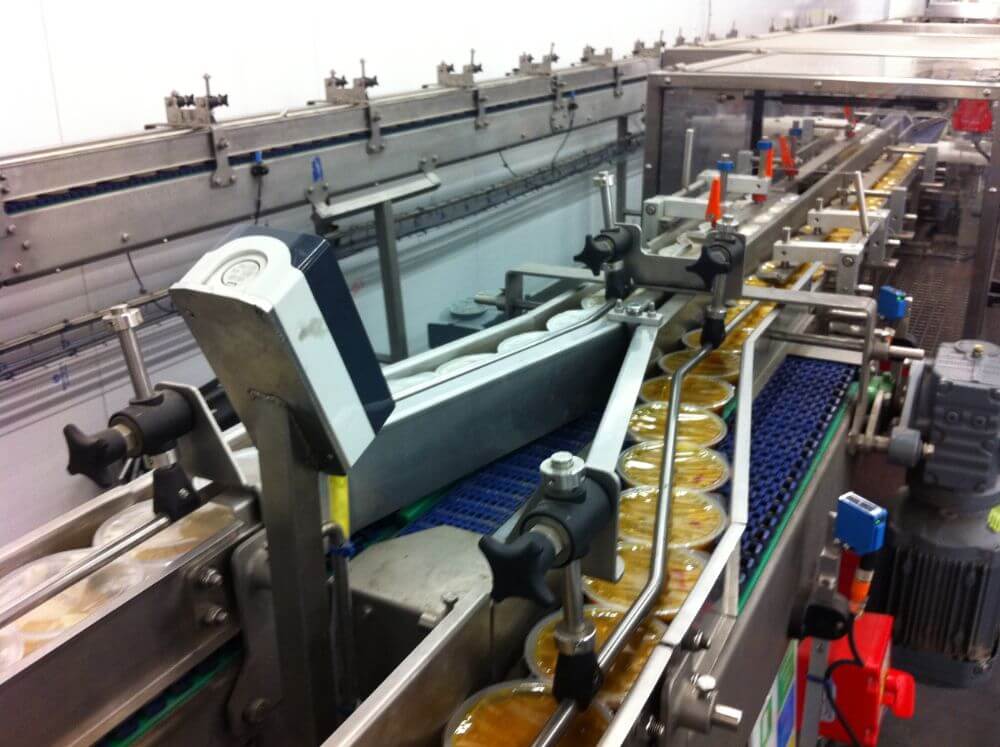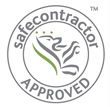
Whether you’re operating a large or small-scale business, we know that every second counts. That’s why designing your modular belt conveyor system correctly, to ensure smooth running and minimal interruptions to daily operations is so important.
So how can you design a modular conveyor belt system that works for you?
Here are some ideas, and things to consider for your next belt conveyor.
What is a modular belt conveyor?
A modular belt conveyor is a flat belt conveyor and is made up of individual plastic or steel modules usually linked together using joint rods. Modular belt conveyors are suitable for conveying components or packed materials throughout production areas inside factories. An advantage of a modular belt conveyor is that curved sections of belts are available.
The modular belt is robust and can tolerate high and low-temperature products. Large belt widths are possible without high pre-tensioning.
Specialist applications for modular belt conveyors include:
- Packaging lines
- Cooling and drying applications (air can permeate through belt)
- Dewatering applications
- Assembly lines
- Singulation systems
- Tray merging or routing
- Warehousing distribution
Components of an Intralox modular belt

How are loose items contained?
Side guides can be fitted to prevent loose items falling off the belt
and for increasing bed depth. Side guides may be mounted on the belt or static.
Static side guides add friction to the belt so must be included in any
calculations to determine belt pull.
How to contain loose items when changing elevation?
Flights can be fitted to the belt to provide pockets in the belt to
contain loose product sliding on an inclined belt. Usually side guides will be
fitted when flights are used. Flights add weight to the belt and must be
included in belt pull calculations.
When is a modular belt conveyor not suitable?
Modular belt conveyors are not suitable for conveying loose granular or powdered materials. The belts are flat and cannot contain loose material, and the belts are a series of open links so small particles would fall through. Modular belt conveyors can be washed; however, the links are classed as crevices and therefore precludes this type of belt for highly hygienic applications. Modular belt conveyors are generally used for light loads and not suitable for very long distances without linking several conveyors together.
What Is the Best Material?
The choice of material is dependent upon application parameters.
Acetal
A thermoplastic that is stronger than polyethylene and polypropylene and has a good balance of mechanical and thermal properties. Good fatigue endurance. Low coefficient of friction making it a good choice container handling and transport. Suitable for temperatures between -46 deg C and 93 deg C.
Polyethylene
A lightweight thermoplastic that has superior flexibility and impact strength. Excellent product release characteristics. Suitable for temperatures between – 73 deg C and + 66 deg C. Resistant to many acids, bases and hydrocarbons.
Polypropylene
For use in general applications and where chemical resistance may be required. Good balance of moderate strength and lightweight. Suitable for temperatures from 1 deg C to 104 deg C. Becomes brittle at low temperatures so not suitable for cold conditions.
Nylon
Suitable for abrasive wet and dry heavy duty applications. Temperature range is -46 deg C to 116 deg C.
CRFR
An engineering material suitable for food processing where a high degree of chemical resistance is required. Exceptional resistance to strong acids, sanitation chemicals, salts, alcohols and oxidants. CRFR is however extremely hydrophobic. Temperature range -18 deg C to 66 deg C.
Detectable Acetal
Developed for food applications where it is essential to be able to detect product contamination using metal or x-ray detectors. Metal filled material will not rust or expose sharp particles. Temperature range from -46 deg C to 93 deg C.
Detectable Polypropylene
Developed for food applications where it is essential to be able to detect product contamination using metal or x-ray detectors. Metal filled material will not rust or expose sharp particles. Temperature range from -18 deg C to 66 deg C.
Stainless steel
Extremely rugged, long lasting belt for heavy duty applications.
Extremely open structure allowing superb air flow for heating, drying and
cooling applications.

Safety, compliance and standards
All modular belt conveyors are designed and manufactured to comply with national and international standards of best practice and safety. The overall conveyor is designed to conform to BS EN 620. Guarding complies with BS EN ISO 14120, and all electrical components conform to IEC 60204-1.
With conveyor belts causing 30% of all injuries in the food production industry, there are also risk factors to consider in your belt system to protect your workers from unnecessary harm or danger.
As with all products sold in the European Union each modular belt
conveyor will need to fully comply with EU Directives and carry the CE mark to
confirm it complies.
What are the design parameters required in a modular belt conveyor?
A detailed understanding of the product to be handled, the operating and environmental conditions is essential before designing the modular belt conveyor. The designer will want to know the following:
- The type of belt system required: straight, radius or spiral
- The overall dimensions of the installed belt, length, width, elevation change
- Speed of belt or throughput required
- Product characteristics: density, unit size and shape, hardness, brittleness, texture. Corrosiveness, moisture content, temperature, abrasiveness.
- Process requirements: heating, cooling, washing, draining, drying
- Hygiene requirements: conformity to standards, cleaning requirements
- Methods of loading and unloading the belt
- Environmental: Temperature, humidity, chemicals, abrasive or hazards.
- Type of drive system
Seven Steps:
Step 1: Select a suitable belt type
Step 2: Calculate the pull on the belt
Step 3: Adjust belt pull for specific conditions
Step 4: Calculate allowable belt strength
Step 5: Check belt selected is suitable
Step 6: Calculate sprocket and drive shaft requirements
Step 7: Calculate power needed to drive the belt
Deciding on the right specification of modular conveyor belt can be a complicated task as there are so many parameters to consider. If you require help, please contact Dodman who are always happy to help.
How Long Can Your Belt System Be?
The length of each section of modular belt conveyor is limited by the
strength of the belt to overcome the belt pull. Multiple modular belt conveyors
can be linked together to provide very large and complex systems.
How to Make Your Conveyor Belt Fit Your Space
Conveyor belts can be supplied in a range of standard and customised widths to suit the load and space they are housed in. Your conveyor belt system can also move loads across different vertical planes, so you can maximise your space in three dimensions.
However large or small your conveyor belt requirement, we will have a solution for you. Our in-house design engineers can ensure that whatever your space and needs, we can supply and maintain your conveyor belt system, so it provides optimum performance, all day, every day.
To find out more about our belt conveyor systems or to request a quote for your project, contact Dodman today.






